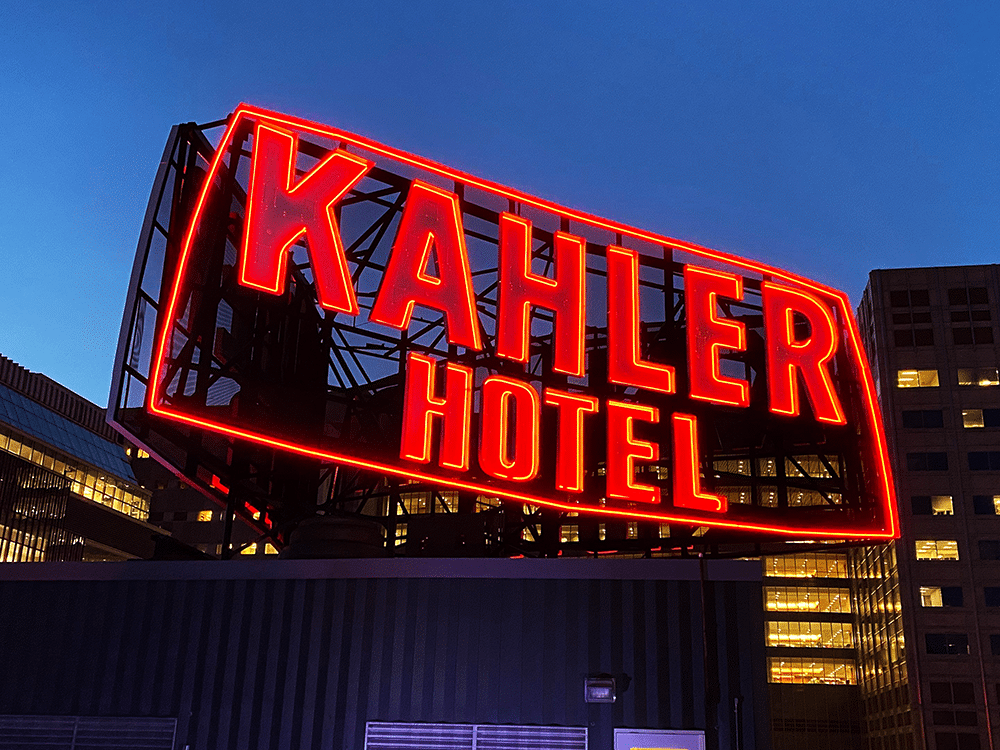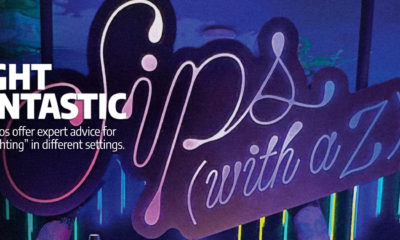The editors of Signs of the Times received the following letter from Todd Matuszewicz, Master’s student of Historic Preservation at the University of Colorado, Denver College of Architecture and Planning, and general manager of Morry’s Neon (Denver).
In December of last year and January of this year, the rooftop neon signs of Benjamin Moore Paints in Denver and The Palace Hotel in San Francisco were retrofitted with LED. Both projects were highlighted in the press, emphasizing the versatility and economy of the new technology. In February of this year, two sign industry journals featured articles on retrofitting vintage neon signs: Wendover Will and the Kahler Grand Hotel.
All four of these signs were either landmarked or eligible for historic nomination. Yet, all four projects were converted from their original materials into substitute materials. The Secretary of the Interior has particular guidelines, clarified in The National Park Service’s (N.P.S.) Briefs 16 and 25 regarding the qualification for substitution. Enumerated reasons include the unavailability of historical materials, unavailability of skilled artisans or craft techniques, inadequate durability of the original materials, enhanced resilience and sustainability of the new material. The last of these is the main contention of the new retrofit movement. N.P.S. Brief 16 also clearly states, “Maintenance costs should not be considered without also considering life-cycle costs.” This consideration includes the calculation of repairability, proven durability, complete replacement when failure occurs and the end-of-life cost versus incremental, scheduled maintenance of the historic material.
LED replacement is often touted as more economical than neon. By some measures, that is true. However, the National Trust for Historic Preservation’s carbon avoidance tool, C.A.R.E., estimates that a 30% savings in energy efficiency will require 10-80 years of operation to recoup the initial carbon impact of replacement. Given the in-field lack of data on the longevity of LED replacement, the economic benefit analysis of LED is questionable, while the environmental superiority of historic neon is not. The greenest sign is the one that already exists.
The impact of historic preservation has been well documented. Historic restoration projects, dollar for dollar, are one of the highest job-creating sectors. Research has shown that preservation offers a superior economic catalyst compared with other investments. This phenomenon ripples through other industries, creating secondary jobs and increasing household income.
Retaining historic neon signs has an impact beyond the economic and environmental. Often, we fail to consciously recognize the fundamental “special value of old buildings, places, and landscapes bestowed by time.” Research shows that people tend to have a higher level of attachment to historic places and objects than non-historic ones. They feel as though they are discovering secret places, are immersed in a visual richness lacking in newer settings, are enamored with the unseen effort required to maintain the beauty and experience “spontaneous fantasies” that bond them to the place. These places are precious because they possess a quality that can only be acquired by time.
Advertisement
The debate between neon and LED replacement is often cloaked as a Luddite versus Technophile battle. However, the solution seems clear: Each of them has its place. The concern is that LED technology is being promoted, for reasons beyond the scope of this piece, over historic neon technology, ignoring the clear evidence of the irreplaceable nature of neon economically, environmentally, and emotionally. The optimal way to “move forward with the future,” with “the end in mind,” is to follow the N.P.S. Brief 25 guidelines that wisely encourage communities to “promote diversity in signs.”
As a leader in the sign industry, I ask that you do the same. — Todd Matuszewicz
For more information, visit morrysneon.com.
 The LED-for-neon retrofit of the Kahler Grand Hotel is one project at issue in this opinion piece.
The LED-for-neon retrofit of the Kahler Grand Hotel is one project at issue in this opinion piece.

 Tip Sheet2 weeks ago
Tip Sheet2 weeks ago
 Photo Gallery4 days ago
Photo Gallery4 days ago
 Ask Signs of the Times6 days ago
Ask Signs of the Times6 days ago
 Real Deal2 weeks ago
Real Deal2 weeks ago
 Paula Fargo1 day ago
Paula Fargo1 day ago
 Benchmarks1 week ago
Benchmarks1 week ago
 Photo Gallery1 day ago
Photo Gallery1 day ago
 Women in Signs2 weeks ago
Women in Signs2 weeks ago










